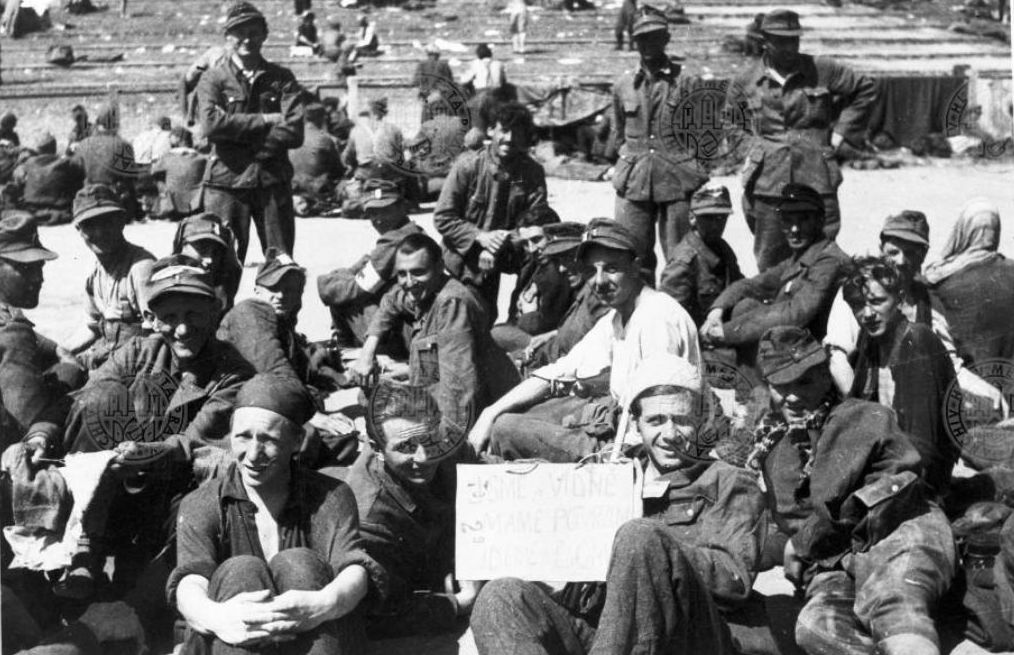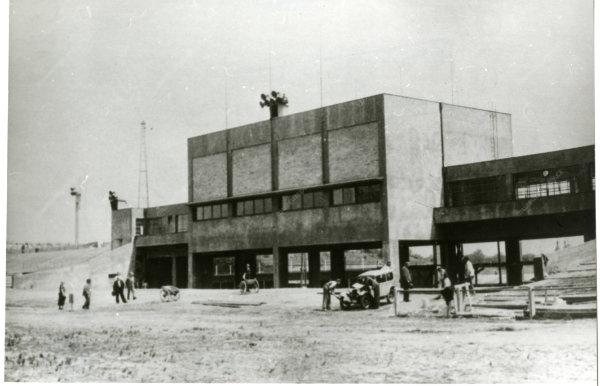- 100/6 Vaníčkova Street; Internment camp for the German population
Strahov Stadium
Opened in 1926, Strahov Stadium was primarily intended for sports activities and public exercises of the Czech Sokol Organisation or Orel Movement. During its first twenty years, the stadium was occasionally used as a large-capacity accommodation facility.
During September and October 1938, Strahov Stadium served as a temporary refuge for the inhabitants of the former Sudetenland, from which the German army systematically pushed them inland. In May 1945, the largest internment camp was established there for 5,000 to 8,000 German civilians and members of the German army.
The internees were not guarded by the Czechoslovak army but rather by the members of the ‘Revolutionary Guards’, civilians without military training. As in many other places of this type, brutality and violence against Germans occurred, with Waffen-SS members being shot at the stadium walls. Moreover, the Revolutionary Guards had to face the raids by the Red Army soldiers who came to steal the property of interned Germans and rape women. At least 43 people died there, including 27 women.
Subsequently, most of the German military and armed forces members were transferred to the Motol Internment Camp and the civilians to Terezín – paradoxically to the place where the Nazis detained and executed Czechs. The Strahov Stadium Internment Camp was part of other detention camps in Greater Prague, where 25,000 people of German nationality were placed in May 1945. (Camp Rupa Modřany, Camp Hostivař)

Snapshot from the construction of the Strahov Stadium in 1934. Museum of Prague, unknown photographer.

The POWs at the Strahov Stadium holding the sign ‘We are from Vienna, we have confirmation, we are going home’, May 1945. Prague City Archives, unknown photographer.



